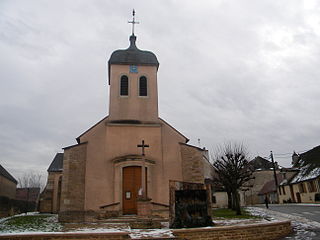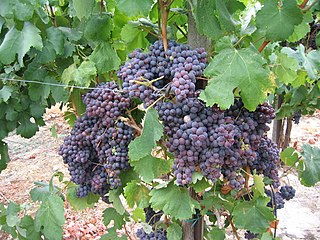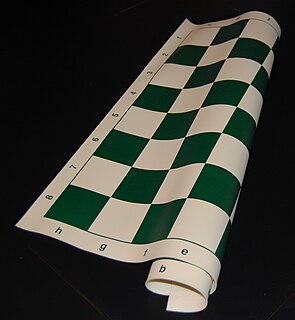
A grape is a fruit, botanically a berry, of the deciduous woody vines of the flowering plant genus Vitis.

Wine is an alcoholic drink made from fermented grapes. Yeast consumes the sugar in the grapes and converts it to ethanol, carbon dioxide, and heat. Different varieties of grapes and strains of yeasts produce different styles of wine. These variations result from the complex interactions between the biochemical development of the grape, the reactions involved in fermentation, the terroir, and the production process. Many countries enact legal appellations intended to define styles and qualities of wine. These typically restrict the geographical origin and permitted varieties of grapes, as well as other aspects of wine production. Wines not made from grapes include rice wine and fruit wines such as plum, cherry, pomegranate, currant and elderberry.

Champagne is sparkling wine. Many people use the term Champagne as a generic term for sparkling wine but in some countries, it is illegal to label any product Champagne unless it both comes from the Champagne region and is produced under the rules of the appellation. Where EU protectionism laws apply, this alcoholic drink is produced from grapes grown in the Champagne region of France following rules that demand, among other things, secondary fermentation of the wine in the bottle to create carbonation, specific vineyard practices, sourcing of grapes exclusively from specific parcels in the Champagne appellation and specific pressing regimes unique to the region.

A vineyard is a plantation of grape-bearing vines, grown mainly for winemaking, but also raisins, table grapes and non-alcoholic grape juice. The science, practice and study of vineyard production is known as viticulture.

Riesling is a white grape variety which originated in the Rhine region. Riesling is an aromatic grape variety displaying flowery, almost perfumed, aromas as well as high acidity. It is used to make dry, semi-sweet, sweet, and sparkling white wines. Riesling wines are usually varietally pure and are seldom oaked. As of 2004, Riesling was estimated to be the world's 20th most grown variety at 48,700 hectares, but in terms of importance for quality wines, it is usually included in the "top three" white wine varieties together with Chardonnay and Sauvignon blanc. Riesling is a variety which is highly "terroir-expressive", meaning that the character of Riesling wines is greatly influenced by the wine's place of origin.

Pinot noir is a red wine grape variety of the species Vitis vinifera. The name may also refer to wines created predominantly from pinot noir grapes. The name is derived from the French words for pine and black. The word pine alludes to the grape variety having tightly clustered, pine cone-shaped bunches of fruit.

Ice wine is a type of dessert wine produced from grapes that have been frozen while still on the vine. The sugars and other dissolved solids do not freeze, but the water does, allowing for a more concentrated grape juice to develop. The grapes' must is pressed from the frozen grapes, resulting in a smaller amount of more concentrated, very sweet wine. With ice wines, the freezing happens before the fermentation, not afterwards. Unlike the grapes from which other dessert wines are made, such as Sauternes, Tokaji, or Trockenbeerenauslese, ice wine grapes should not be affected by Botrytis cinerea or noble rot, at least not to any great degree. Only healthy grapes keep in good shape until the opportunity arises for an ice wine harvest, which in extreme cases can occur after the New Year, on a northern hemisphere calendar. This gives ice wine its characteristic refreshing sweetness balanced by high acidity. When the grapes are free of Botrytis, they are said to come in "clean".

Samuel "Sam" Ervin Beam, better known by his stage and recording name Iron & Wine, is an American singer-songwriter. He has released six studio albums, several EPs and singles, as well as a few download-only releases, which include a live album. He occasionally tours with a full band.

Sangria is an alcoholic beverage. A punch, the sangria traditionally consists of red wine and chopped fruit, often with other ingredients such as orange juice or brandy.

Wine Country is the region of California, in the northern Bay Area, known worldwide as a premium wine-growing region. The region is famed for its wineries, its cuisine, Michelin star restaurants, boutique hotels, luxury resorts, historic architecture, and culture. Viticulture and wine-making have been practiced in the region since the Spanish missionaries from Mission San Francisco Solano established the first vineyards in 1812.

The Rhône wine region in Southern France is situated in the Rhône valley and produces numerous wines under various Appellation d'origine contrôlée (AOC) designations. The region's major appellation in production volume is Côtes du Rhône AOC.
A winemaker or vintner is a person engaged in winemaking. They are generally employed by wineries or wine companies, where their work includes:
Biodynamic wines are wines made employing biodynamic methods both to grow the fruit and during the post-harvest processing. Biodynamic wine production uses organic farming methods while also employing soil supplements prepared according to Rudolf Steiner's formulas, following a planting calendar that depends upon astronomical configurations, and treating the earth as "a living and receptive organism.

Sideways is a 2004 American comedy-drama film directed by Alexander Payne and written by Jim Taylor and Payne. A film adaptation of Rex Pickett's novel of the same name, Sideways follows two men in their forties, Miles Raymond, a depressed teacher and unsuccessful writer, and Jack Cole, a past-his-prime actor, who take a week-long road trip to Santa Barbara County wine country to celebrate Jack's upcoming wedding. Sandra Oh and Virginia Madsen also star. The film premiered at the Toronto International Film Festival on September 13, 2004, and was released in the United States on October 22, 2004.

The Australian wine industry is the world's fifth largest exporter of wine with approximately 780 million litres a year to the international export market with only about 40% of production consumed domestically. The wine industry is a significant contributor to the Australian economy through production, employment, export and tourism.

A wine bar is a tavern-like business focusing on selling wine, rather than liquor or beer. A typical feature of many wine bars is a wide selection of wines available by the glass. Some wine bars are profiled on wines of a certain type of origin, such as Italian wine or Champagne. While many wine bars are private "stand-alone" establishments, in some cases, wine bars are associated with a specific wine retailer or other outlet of wine, to provide additional marketing for that retailer's wine portfolio. In countries where licensing regulations allow this, some wine bars also sell the wines they serve, and effective function as a hybrid between a wine shop and a wine bar.
John Radford, born in Nottingham on 1 December 1946, died on 19 October 2012, was a British writer and broadcaster in the field of wine and food, with an emphasis on Spain. He was educated at Stamford School in Lincolnshire.

Chorey-les-Beaune is a commune in the Côte-d'Or department in eastern France.

An alcoholic drink is a drink that contains ethanol, a type of alcohol produced by fermentation of grains, fruits, or other sources of sugar. The consumption of alcohol plays an important social role in many cultures. Most countries have laws regulating the production, sale, and consumption of alcoholic beverages. Some countries ban such activities entirely, but alcoholic drinks are legal in most parts of the world. The global alcoholic drink industry exceeded $1 trillion in 2018.

Kotsifali is a red Greek wine grape that is indigenous to the island of Crete. It is mainly grown in the Heraklion regional unit and sporadically on the Cyclades. The grape alone gives moderately red wine with high alcohol content and rich flavor. It is often blended with Mandilaria, yielding a ruby-colored dry wine with pleasant taste and aroma that requires minimal aging.


















